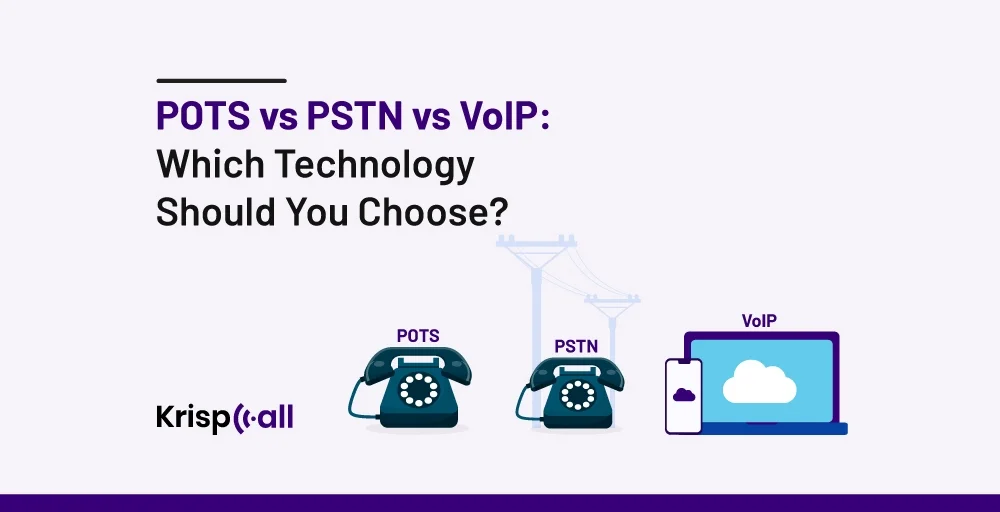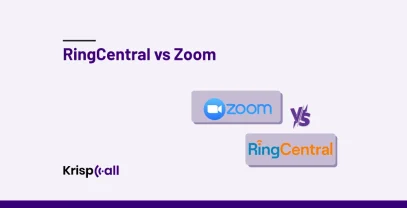Welcome to the world of telecommunication!! Have you ever wondered how the telecommunication process takes place? 📞
There are three different approaches through which communication can be carried out. POTS (Plain Old Telephone Service), PSTN (Public Switched Telephone Network), and VoIP (Voice over Internet Protocol).
POTS and PSTN are traditional telecommunication systems that use copper wires🔌 to transmit voice signals. In contrast, VoIP uses the internet 🛜to transmit voice signals and multimedia sessions through the IP network.
Now, let’s gain in-depth knowledge about them and a clear view of POTS vs PSTN vs VOIP, their differences, features, pros, and cons to help you choose an optimal telecommunication system.
🔑 KEY HIGHLIGHTS
- POTS, PSTN, and VoIP, are the three telecommunication technologies used for communication.
- POTS and PSTN transmit voice signals through a copper wire, whereas VoIP transmits via the internet.
- Some of the pros of VoIP are scalability, cost-effectiveness, and other advanced features.
- Some of the cons of VoIP are relying on the Internet, potential security concerns, and the possibility of quality issues with a poor Internet connection.
POTS Vs PSTN Vs VoIP: At a Glance
Let’s take a look at the three major telecommunication technologies and their differences from each other.
| Factor | POTS | PSTN | VoIP |
| Definition | Traditional analog phone service over copper wires. | A global network of interconnected circuit-switched telephone networks. | Communication technology that delivers voice and multimedia over the internet. |
| Technology | Analog signal | Circuit-switched network utilizing both analog or digital signaling. | Digital packets are transmitted over IP networks. |
| Infrastructure | Copper wire networks | Extensive network of cables and switches | Relies on internet infrastructure |
| Cost | Relatively high | Moderate | Generally lower |
| Call Quality | Stable and reliable | Moderate depending on local and long-distance rates | Generally good but may vary depending on the internet connection |
| Device+Hardware Compatibility | Compatible with traditional analog phones and devices. | Compatible with various analog and digital devices, including PBX systems. | Compatible with VoIP phones, softphones, and adapters. |
| Standard Features | Calling features such as voice calling and caller ID. | Standard features include voice calling, caller ID, call forwarding, etc. | Extensive features, including video conferencing, voicemail to email, etc. |
| Scalability | Limited | Can be scalable | Highly scalable |
| Reliability | Reliable but susceptible to outages | Generally reliable, can be affected by network disruptions | Reliable, can vary depending on the internet connection |
| Best for | Rural areas with limited internet access. | Businesses requiring reliable voice communication over long distances. | Businesses seeking cost-effective and flexible communication solutions. |
POTS Vs PSTN Vs VoIP: Understanding the Technologies
The three communication technologies, POTS, PSTN, and VoIP, each have their own functionalities, capabilities, and limitations, so understanding each technology gives you essential insight into which might be better for you and your business.
What is POTS?
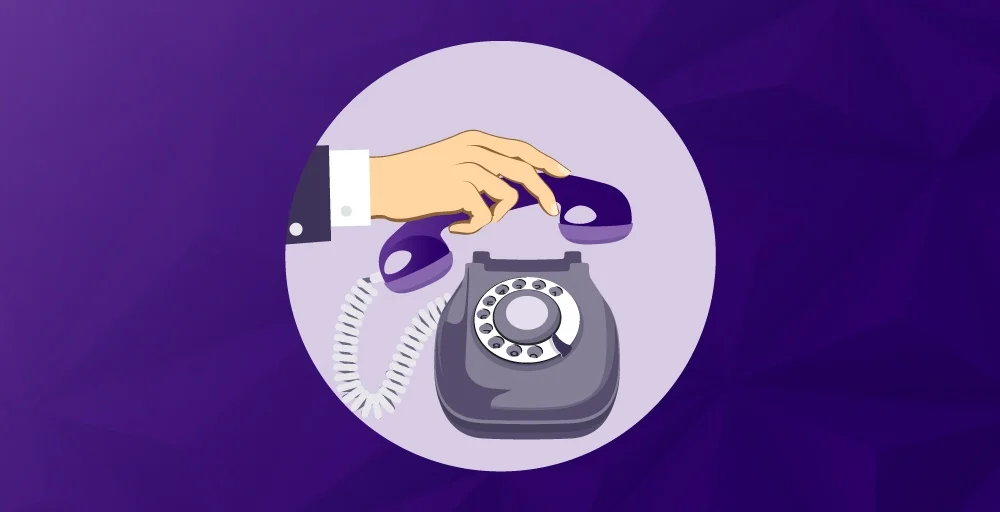
POTS (Plain Old Telephone Service) is one of the most widely used voice communication systems. It refers to a traditional analog telephone system that uses copper wire to transmit analog signals.
POTS uses a network of copper wires to send analog signals for voice communication. As someone speaks on the telephone, their voices are converted into electrical signals. With the help of copper wires, the signals at the receiver are again transformed into sound waves, which enables the listener to understand. With it, one can make or receive telephone calls, and also has other aspects such as caller ID or call waiting functionality.
What is PSTN?
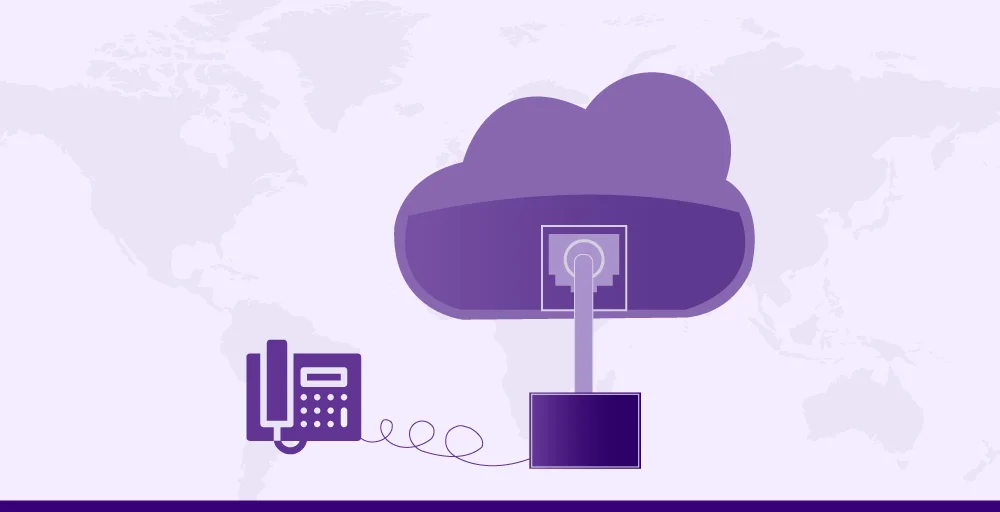
PSTN (Public Switched Telephone Network) is a worldwide network of interconnected telephone systems operated by various service providers. The Public Switched Telephone Network (PSTN) links telephones using local exchanges to switch equipment.
PSTN directs calls using signaling systems and trunks so that calls are dialed from one place to another, allowing people to communicate over long distances. The PSTN (Public Switched Telephone Network) allows for traditional voice calls, fax transmission, dial-up internet, emergency service, business communication, security alarms, and network connections.
What is VoIP?
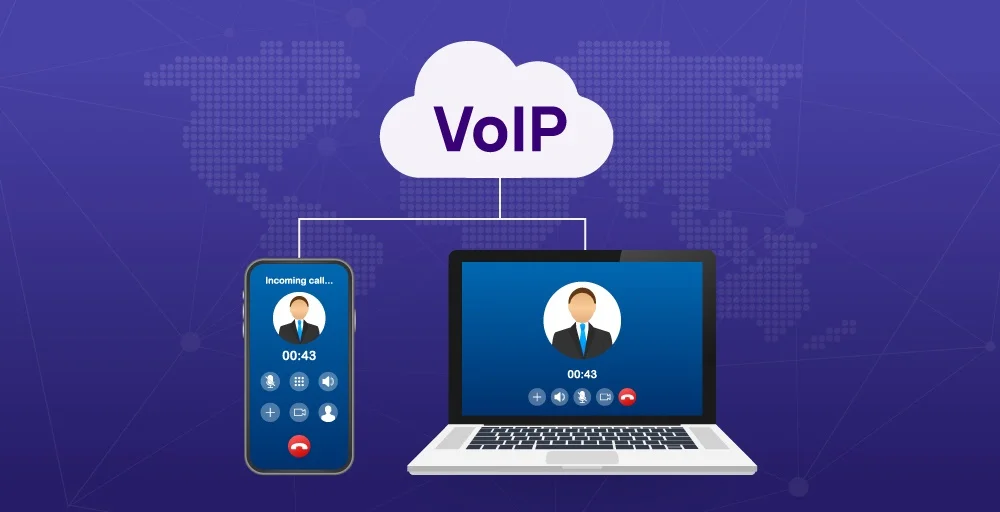
VoIP (Voice over Internet Protocol) is a telecommunication technology that carries out voice communication as well as multimedia sessions through the Internet using an IP network.
VoIP service converts analog voice signals to digital data packets for transmission over IP networks. It involves dividing the voice signal into small data packets and adding the routing and synchronization information before sending them over an IP network. These packets are restructured into voice signals and returned to the receiver after transmission. It is widely used in businesses, as it offers features like IVR, call forwarding, voicemail, integration with other applications, and many more.
POTS vs PSTN vs VoIP: Major Differences
Traditional Plain Old Telephone Service (POTS), Public Switched Telephone Network (PSTN), and VoIP (Voice over Internet Protocol) differ in their communication techniques. POTS operate on analog signals relayed via copper cables for the purpose of transmitting only voice messages as well as some information with low bandwidth.
Conversely, the Public Switched Telephone Network (PSTN) can be regarded as a wider term that defines the whole structure of worldwide telephone communication. It’s made up of POTS lines, digital technology, and signaling systems. It employs circuit-switching and physical connections when routing calls, thus being more reliable, less flexible, and expensive compared to VoIP.
However, Voice over Internet Protocol (VoIP) transfers audio and multimedia via the Internet in a digital data packet form. It compresses data before converting analog speech signals into it, transmitting this data across IP networks. VoIP has many advantages, such as video calls, conferencing, integration with other digital services, cost savings, and scalability, which increase demand for this connection type over the PSTN system.
POTS vs PSTN vs VoIP: Cost Comparison
Cost-wise, POTS, PSTN, and VoIP have several differences. POTS, the classic analog service, is often seen as the more expensive alternative. POTS lines may need specific physical connections, which directly increase installation and maintenance costs.
If you consider long-distance or international calls, then you will discover that PSTN operators do offer quite affordable bundles as well as lower negotiated rates, but simple voice calls can sometimes cost more when made through PSTN than using VoIP.
VoIP (Voice over Internet Protocol) tends to be the cheapest alternative. Instead of using dedicated phone lines, it sends voice data online. VoIP service providers usually offer flexible payment options, such as lower international call rates and unlimited calling options.
POTS vs PSTN vs VoIP: Features Comparison
| Features | POTS | PSTN | VoIP |
| Reliable call quality | ✅ | ✅ | ✅ |
| Video calls | ❌ | ❌ | ✅ |
| Call Forwarding | ❌ | ✅ | ✅ |
| Voicemail-to-email | ❌ | ❌ | ✅ |
| Virtual phone numbers | ❌ | ❌ | ✅ |
| Conference calling | ❌ | ✅ | ✅ |
| Call recording | ❌ | ✅ | ✅ |
| Interactive voice response (IVR) | ❌ | ❌ | ✅ |
| CRM Integration | ❌ | ❌ | ✅ |
| Web Conferencing | ❌ | ❌ | ✅ |
| Unified communications | ❌ | ❌ | ✅ |
| Mobile app support | ❌ | ❌ | ✅ |
POTS vs. PSTN vs. VoIP: Call Quality Comparision
PSTN (Public Switched Telephone Network) and POTS (Plain Old Telephone Service) are systems for traditional telephone networks that carry voice calls over actual wires. Even though their voice calls do not break up, the sound might sometimes come distorted with noise or interference.
VoIP is a modern communication technology that sends voice calls over the Internet. This technology supports video calls and offers a distinctive call quality. Still, the conversation quality in VoIP may be influenced by the quality or speed of the internet connection at some time.
Landlines (POTS and PSTN) usually offer good phone quality, even though sometimes there are disturbances/interferences. VoIP phone calls are very clear but require an excellent internet connection.
POTS vs PSTN vs VoIP: Pros and Cons
Here are the pros and cons of POTS, PSTN, and VoIP.
1. POTS Pros and Cons
Pros
- Reliable and straightforward for basic telephone needs
- Works during power outages
- Widely available and familiar technology
Cons
- Expensive to maintain
- Limited features
- Becoming outdated globally
2. PSTN Pros and Cons
Pros
- Reliable voice quality
- Can utilize various technologies like ISDN and fiber
- Established and widely available infrastructure
Cons
- Higher costs
- Limited scalability
- Requires more equipment and setup time
3. VoIP Pros and Cons
Pros
- Cost-effective
- Scalable
- Offers advanced features like video calling and multimedia transmission
Cons
- Relies on internet connectivity
- May experience quality issues with poor internet connection
- Potential security concerns if not properly secured
POTS vs PSTN vs VoIP: Which Technology Should You Choose?
Individuals or small firms that require minimal internet access and basic phone services are the best choice for POTS. Companies should consider using the Public Switched Telephone Network (PSTN), that have limited budgets for advanced functions and requires reliable high-quality voice communications.
VoIP (Voice over Internet Protocol) is the recommended option for most companies today. It offers scalability, significant cost savings, and various advanced services such as call routing, video conferencing, and integration with other enterprise applications. VoIP is especially helpful to companies with employees who work in different locations or departments from one another because it allows seamless communication from anywhere, having access to an internet connection.
How to Switch from POTS and PSTN to VoIP?
VoIP has lower costs and is simpler to manage than the traditional system as it uses the internet for communication without any need for extra resources. There are many reasons why VoIP surpasses POTS or PSTN, such as cost-effectiveness, scalability, interfacing capacity, advanced functionalities like cloud-based solutions, flexible remote working options, and better efficiency tools.
You can follow these steps to switch from POTS and PSTN to VoIP system.
- Check out various VoIP service providers like KrispCall and sign up.
- Verify if the internet connection is stable enough. Use broadband or high-speed internet connection.
- Get yourself an IP phone or VoIP adapter that will connect to your internet router.
- Log in the adapter or your IP phone to the internet router as directed by your VoIP service provider.
- Now, input the details required for logging in, which mainly include the username and password, and your VoIP account will be created.
- Next, upon the completion of all settings, you can use what you have to make calls using VoIP technology.
Get KrispCall’s VoIP Phone System for Your Business Today
Improve your corporate communication using KrispCall VoIP phone system. No more landlines, but an affordable, flexible, and more functional replacement for it. With KrispCall, users can have wide options for managing calls.
Every kind of business can take advantage of KrispCall’s comprehensive cloud-based VoIP phone system. KrispCall’s VoIP service does not require any long-term commitment, making it ideal for your company’s growth. Companies can enhance their performance and simplify communication by integrating customer relationship management tools and other calling features like call listening, call forwarding, IVR, simultaneous ringing, etc.
Take your business to the next level and get KrispCall’s VoIP Phone System today!! Book a demo now!!
Final Thoughts
POTS, PSTN, and VoIP are communication technologies that have their own features and functionalities that can benefit businesses. They provide reliable and efficient communication that leads to improved customer service.
POTS and PSTN are traditional systems, whereas VoIP is more advanced, so its demand is gradually increasing nowadays. VoIP provides a highly scalable system, so it’s beneficial for growing businesses or businesses of all kinds. By using advanced communication systems like VoIP, businesses can easily get new features and functionalities to advance their communication process.
FAQ
Are POTS and PSTN the same?
POTS and PSTN are related but not the same. POTS is a part of PSTN, which is a collective term that encompasses all interconnected telephone networks.
Do I have VoIP or POTS?
If your telephone service utilizes traditional copper wire then you likely have POTS. On the other hand, if your telephone service relies on the internet to transmit voice calls, then you likely have VoIP.
What is the difference between VoIP and POTS?
The differences between VoIP and POTS are:
| VoIP | POTS |
| Utilizes Internet or IP-based networks | It relies on traditional copper wires and analog signaling |
| Digital infrastructure requires internet connectivity | Dedicated physical infrastructure of copper wires |
| Often lower cost for domestic and international calls | This may involve higher costs, especially for long-distance or international calls |
| Wide range of features such as call forwarding, voicemail-to-email, video calling | Basic features such as call waiting, caller ID, voicemail |
| Highly flexible; supports advanced communication needs | Less flexible in adding new features or integrating with digital services |
What is the difference between PSTN and VoIP?
The differences between PSTN and VoIP are:
| PSTN | VoIP |
| Utilizes traditional copper wires and analog signaling | Utilizes Internet or IP-based networks |
| Dedicated physical infrastructure maintained by telecommunications companies | Relies on existing digital infrastructure and internet connectivity |
| Typically, higher costs, especially for long-distance or international calls | Often lower costs for domestic and international calls |
| Basic features such as call waiting, caller ID, voicemail | Wide range of features such as call forwarding, voicemail-to-email, video calling |
| Less flexible in adding new features or integrating with digital services | Highly flexible; supports advanced communication needs |

